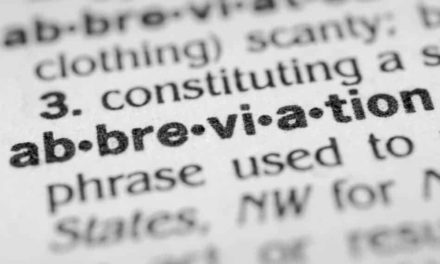Introduction
Academic writing requires precision, credibility, and proper acknowledgment of sources. Direct quotations are an essential component of scholarly work, enabling authors to incorporate authoritative voices and support their arguments. However, using direct quotations without appropriate references can lead to issues such as plagiarism, misrepresentation, or loss of credibility.
This article explores the importance of referencing direct quotations in academic writing, various citation styles, best practices for integrating quotations, and common pitfalls to avoid.
The Importance of Referencing Direct Quotations
Using direct quotations involves copying exact words from a source and placing them within a research paper, essay, or academic work. Proper referencing is crucial because it:
- Ensures Academic Integrity – Prevents plagiarism by giving credit to the original author.
- Supports Arguments with Credible Evidence – Strengthens claims by incorporating expert opinions.
- Enhances Reader Understanding – Provides precise wording that may be more effective than a paraphrase.
- Allows Verification of Sources – Enables readers to locate the original source for further study.
- Maintains Professional and Ethical Standards – Demonstrates adherence to academic conventions and respect for intellectual property.
Failing to reference direct quotations appropriately can lead to academic penalties and diminished credibility.
Citation Styles for Referencing Direct Quotations
Different academic disciplines use distinct citation styles. Below are some common styles and their guidelines for citing direct quotations.
1. APA (American Psychological Association) Style
APA style (7th edition) is widely used in psychology, education, and social sciences.
Short Quotations (Less than 40 words):
- Enclose the quotation in double quotation marks.
- Include the author’s last name, year of publication, and page number.
Example:
According to Smith (2020), “effective communication skills are essential for leadership success” (p. 45).
or
“Effective communication skills are essential for leadership success” (Smith, 2020, p. 45).
Long Quotations (40 words or more):
- Use a block quotation format.
- Indent the entire quotation 0.5 inches from the left margin.
- Do not use quotation marks.
Example:
Smith (2020) stated:
Effective communication skills are essential for leadership success. Leaders who articulate their vision clearly tend to inspire greater confidence in their teams. Furthermore, strategic communication fosters organizational cohesion and improves decision-making processes. (p. 45)
2. MLA (Modern Language Association) Style
MLA style (9th edition) is commonly used in humanities, literature, and cultural studies.
Short Quotations (Four lines or fewer):
- Enclose the quotation in double quotation marks.
- Include the author’s last name and page number in parentheses.
Example:
Smith argues that “effective communication skills are essential for leadership success” (45).
Long Quotations (More than four lines):
- Use a block format.
- Indent the quotation one inch from the left margin.
- Omit quotation marks.
Example:
Smith explains the significance of communication:
Effective communication skills are essential for leadership success. Leaders who articulate their vision clearly tend to inspire greater confidence in their teams. Furthermore, strategic communication fosters organizational cohesion and improves decision-making processes. (45)
3. Chicago Manual of Style (CMS)
Chicago style is used in history, business, and fine arts, and offers two citation systems: Notes and Bibliography (NB) and Author-Date.
Chicago Notes and Bibliography (Footnotes or Endnotes):
- Use superscript numbers to indicate footnotes.
- Include the full reference in the footnote.
Example:
Smith states that “effective communication skills are essential for leadership success.”¹
¹ John Smith, Leadership and Communication (New York: Academic Press, 2020), 45.
Chicago Author-Date:
- Use in-text citations with author, year, and page number.
Example:
“Effective communication skills are essential for leadership success” (Smith 2020, 45).
4. Harvard Referencing Style
Harvard style is used in business, law, and social sciences.
Short Quotations:
- Use double quotation marks.
- Include author name, year, and page number in parentheses.
Example:
Smith (2020, p. 45) states that “effective communication skills are essential for leadership success.”
Long Quotations:
- Use block formatting.
- Indent the text and omit quotation marks.
Example:
Smith (2020, p. 45) explains:
Effective communication skills are essential for leadership success. Leaders who articulate their vision clearly tend to inspire greater confidence in their teams. Furthermore, strategic communication fosters organizational cohesion and improves decision-making processes.
5. IEEE (Institute of Electrical and Electronics Engineers) Style
IEEE style is commonly used in engineering, technology, and computer science.
- Use numerical citations in square brackets.
- Include full reference details in the bibliography.
Example:
Smith states that “effective communication skills are essential for leadership success” [1].
Best Practices for Incorporating Direct Quotations
-
Use Quotations Sparingly
- Direct quotations should enhance, not replace, original analysis.
- Paraphrase when possible while retaining the original meaning.
-
Integrate Quotations Seamlessly
- Introduce quotations with a signal phrase (e.g., “According to Smith…”).
- Avoid dropping quotations abruptly without context.
-
Ensure Accuracy
- Copy quotations exactly as they appear in the source.
- Use brackets ([ ]) for minor modifications and ellipses (…) for omissions.
-
Provide Proper Citation
- Always cite the source to maintain academic integrity.
- Ensure formatting consistency within the chosen citation style.
-
Use Block Quotations When Necessary
- Longer quotations should be formatted as block quotes for readability.
-
Check for Plagiarism
- Even with citations, excessive quoting can lead to plagiarism concerns.
- Use plagiarism detection tools to verify originality.
Common Mistakes to Avoid
- Failing to Cite the Source – Omitting citations can result in academic misconduct.
- Overuse of Direct Quotations – Excessive quoting can make a paper feel unoriginal.
- Incorrect Citation Formatting – Mixing citation styles can lead to confusion.
- Altering Quotations Without Indication – Modifying words without brackets distorts meaning.
- Using Quotations Without Analysis – Always explain the significance of quoted material.
Conclusion
Referencing direct quotations correctly is essential for maintaining credibility, avoiding plagiarism, and supporting arguments effectively. Understanding different citation styles, integrating quotes seamlessly, and adhering to best practices ensures clarity and professionalism in academic writing. Whether following APA, MLA, Chicago, Harvard, or IEEE style, accurate citation of direct quotations enhances the integrity of research and contributes to the scholarly conversation.














